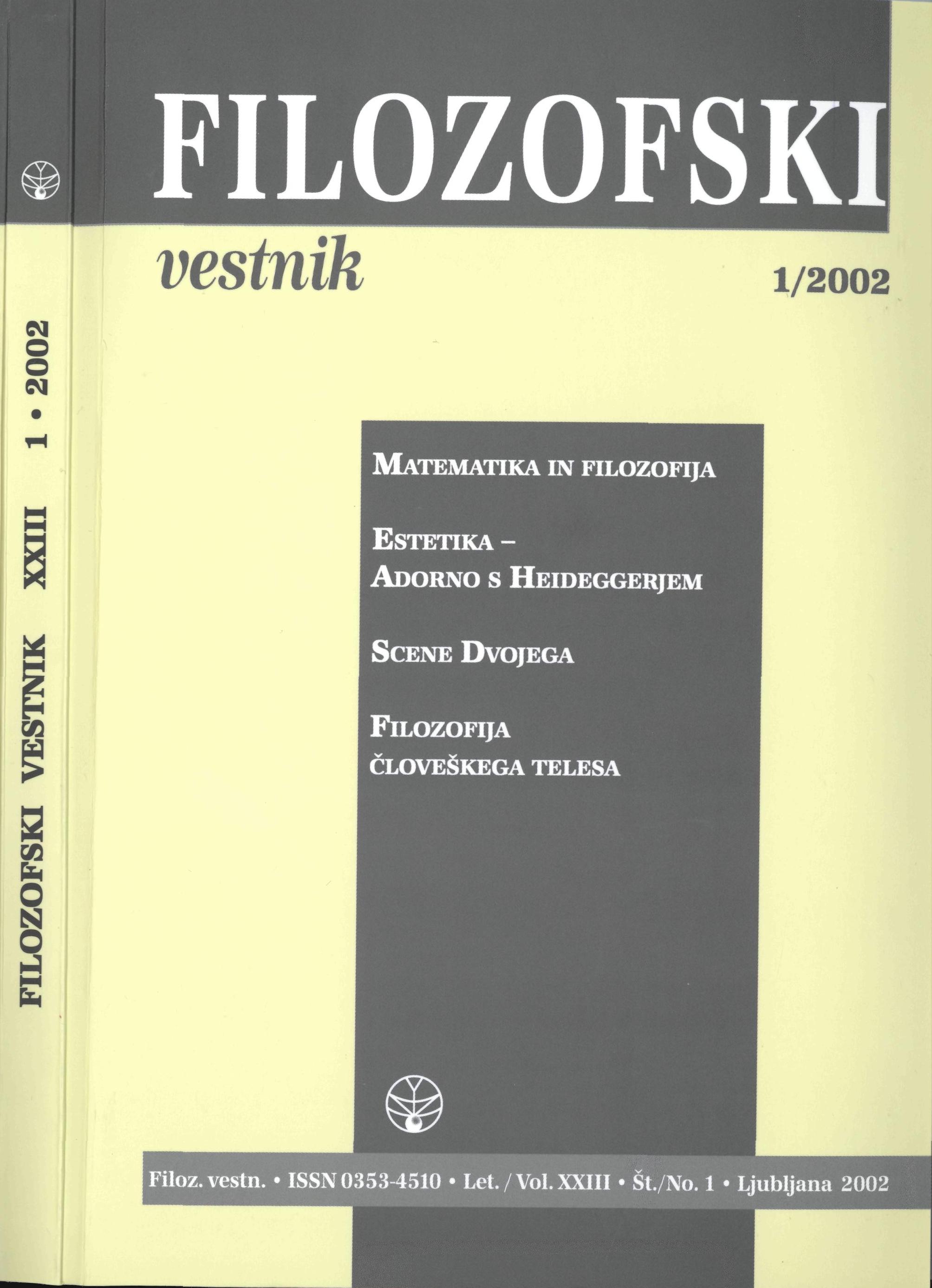Heidegger, Adorno in mimezis
Ključne besede:
Heidegger, Adorno, mimezis, KantPovzetek
Članek obravnava odnose med Heideggeijevo in Adornovo filozofijo umetnosti tako, da ju postavlja nasproti dvema skupnima ozadjema: prvo predstavlja Kantova analiza estetske sodbe, drugo pa prodoren pojav posnemanja v vsaki od njunih estetskih teorij. Izraz posnemanje [mimesis] bom uporabil v smislu Heideggeijeve obravnave - v njegovem »Izviru umetniškega dela« - izvira in sredstev, s katerimi se resnica »dogaja«, posebej tedaj, ko se posnemanje obrne proti sebi samemu kot zgolj imitacija. Gibanje umetnine v tem smislu obravnavani takole: pojem posnemanja preučujem v luči omenjenega Heideggeijevega besedila, da bi osvetlil tako pojem kot besedilo s tem, da ju umestim v odnos do Adornove Estetske teorije (predvsem način, kako tam nastopa posnemanje) kot tudi do Kantove doktrine sublimnega. Gibanje umetnine proti resnici je prikazano kot gibanje posnemanja, zlasti kot sorodno negaciji tega kar seje že zgodilo s strani sublimnega. Po Heideggeijevem in Adornovem mnenju je gibanje posnemanja pri umetnini vzporednica gibanju estetske sodbe.Prenosi
Podatki o prenosih še niso na voljo.
Prenosi
Objavljeno
2016-01-06
Kako citirati
Huhn, T. (2016). Heidegger, Adorno in mimezis. Filozofski Vestnik, 23(1). Pridobljeno od https://ojs.zrc-sazu.si/filozofski-vestnik/article/view/3423
Številka
Rubrike
Adorno s Heideggerjem
Licenca
Avtorji jamčijo, da je delo njihova avtorska stvaritev, da v njem niso kršene avtorske pravice tretjih oseb ali kake druge pravice. V primeru zahtevkov tretjih oseb se avtorji zavezujejo, da bodo varovali interese založnika ter da bodo povrnili morebitno škodo.
Podrobneje v rubriki: Prispevki





